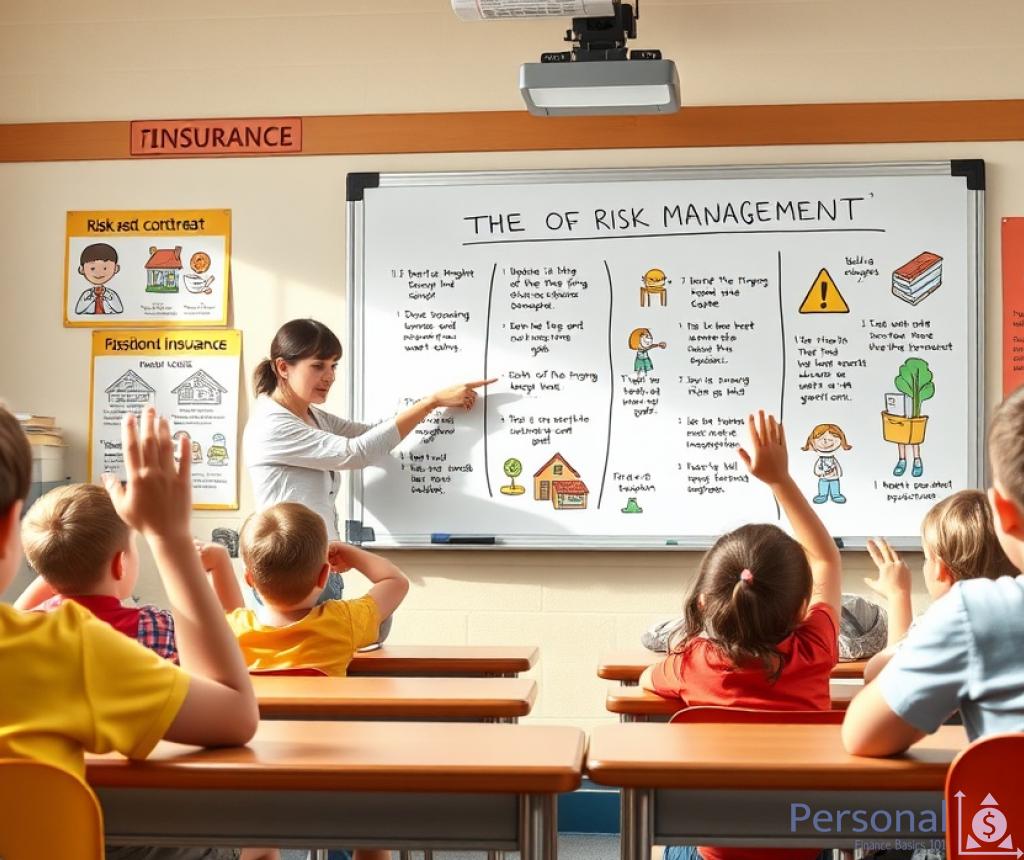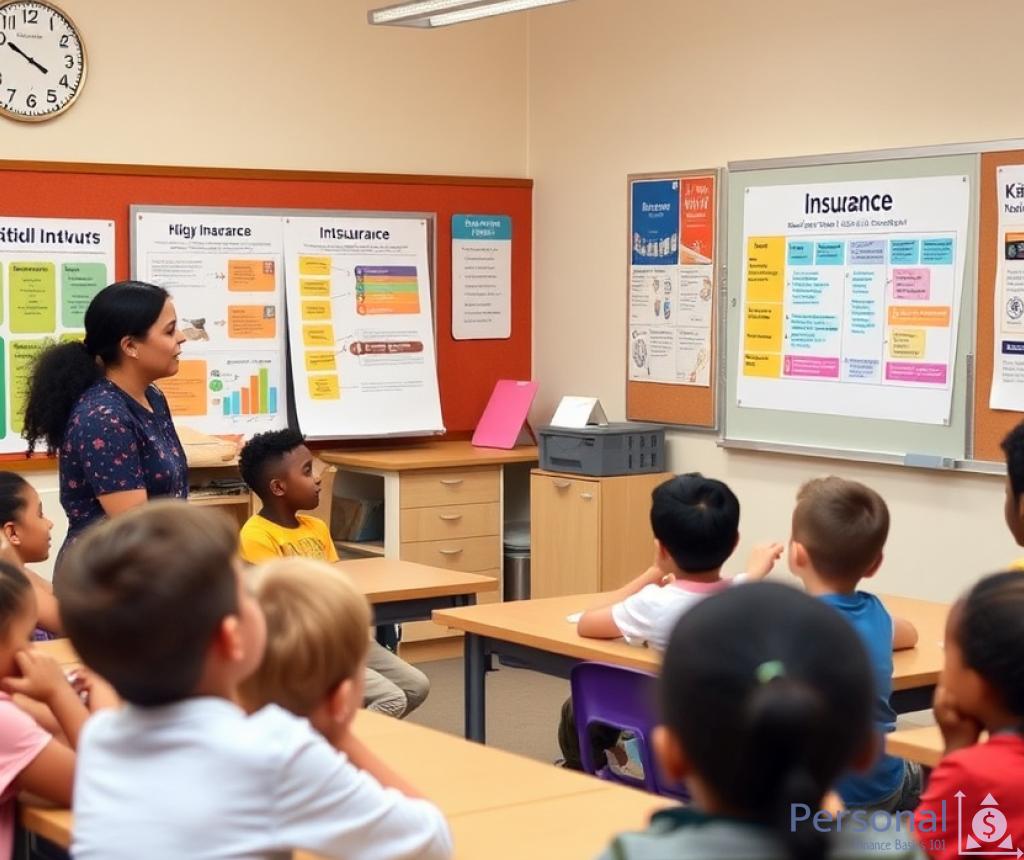Understanding the Basics of Insurance

The Importance of Insurance in Everyday Life
Insurance is a fundamental aspect of modern living that safeguards individuals and families against unexpected financial burdens. Teaching kids about insurance not only prepares them for future financial responsibilities but also instills a sense of security and understanding of risk management. Understanding the basics of insurance can empower children to make informed decisions as they grow older.
Types of Insurance: A Snapshot
When discussing insurance, it is essential to recognize the various types that exist. Each type serves a unique purpose and offers different forms of protection. By familiarizing kids with these categories, they can appreciate how insurance works to mitigate risks in different areas of life.
- Health Insurance: Covers medical expenses for illnesses, injuries, and preventive care.
- Auto Insurance: Protects against financial loss related to vehicle use, including accidents and theft.
- Homeowners/Renters Insurance: Provides coverage for personal belongings and liability in case of accidents at home.
- Life Insurance: Offers financial protection for dependents in the event of the policyholder’s death.
How Insurance Works: The Basics Explained
At its core, insurance operates on the principle of risk pooling. Individuals pay premiums to an insurance company, which in turn creates a fund to cover potential claims. This concept can be likened to a safety net that protects against unforeseen events. To illustrate this, we can look at a simple comparison table that outlines how premiums and claims function in different scenarios.
| Scenario | Premium Paid | Potential Claim |
|---|---|---|
| Monthly Health Insurance | $200 | $5,000+ for surgery |
| Annual Auto Insurance | $1,200 | $10,000 for car repairs |
| Homeowners Insurance | $800 | $20,000 for fire damage |
By understanding these basics, children can appreciate the value of insurance as a protective measure that helps manage risk throughout their lives.
The Importance of Risk Management

In today’s unpredictable world, understanding the nuances of risk management is essential for fostering a sense of security and preparedness in children. By teaching kids how to identify potential risks in various aspects of life, we empower them to approach challenges with confidence. Risk management is not merely about avoiding danger; it is about making informed choices that lead to safer environments and healthier lifestyles.
Recognizing Risk: For children, the first step in mastering risk management is recognizing what constitutes a risk. This could range from physical dangers, like riding a bicycle without a helmet, to financial risks, such as investing money without understanding the market. By encouraging kids to assess situations critically, they learn the importance of prioritizing safety and making prudent decisions. When children grasp that taking calculated risks can lead to rewarding outcomes, they become more adept at navigating life’s uncertainties.
Strategies for Mitigation: Once children can identify risks, the next phase involves developing strategies to mitigate those risks. This is where the concepts of insurance come into play. For instance, explaining how health insurance can alleviate the financial burden of medical emergencies helps children comprehend the broader implications of risk management. They begin to understand that proactive measures, such as securing insurance, can serve as a safety net during unforeseen circumstances. This knowledge fosters a mindset that values preparation and resilience.
Long-Term Benefits: The skills acquired through learning about risk management extend well beyond childhood. As they grow, children who are well-versed in these principles will be better equipped to tackle challenges in their personal and professional lives. They will recognize the value of assessing risks before making significant decisions, whether it involves career choices, financial investments, or health-related matters. Ultimately, instilling a strong foundation in risk management leads to responsible adults who can navigate complexities with a balanced perspective.
Teaching Financial Literacy Through Insurance

In an era where financial literacy is increasingly vital, instilling a solid understanding of insurance in children can pave the way for responsible financial behavior in their adult lives. By integrating the principles of insurance into financial education, parents and educators can provide children with valuable tools to navigate the complexities of personal finance. This comprehensive approach not only highlights the significance of protection but also equips kids with the knowledge to make informed financial decisions that can profoundly impact their future.
Decoding Financial Concepts Through Insurance: Teaching children about insurance offers a unique opportunity to explain broader financial concepts in a relatable context. For instance, when discussing premiums, deductibles, and claims, children can grasp these terms through real-life scenarios. By using relatable examples, such as how health insurance can cover the costs of a broken arm, children can visualize the benefits of having insurance. This practical understanding fosters an appreciation for the value of investing in protection against unforeseen financial burdens.
Building Budgeting Skills: One of the critical lessons in financial literacy is the ability to budget. By involving children in discussions about insurance costs, such as monthly premiums or annual payments, they can learn to allocate their finances strategically. For example, parents can illustrate how setting aside a portion of their allowance for insurance can lead to greater financial security. This exercise not only emphasizes the importance of saving but also teaches them to prioritize their spending, ensuring they are prepared for emergencies that require insurance claims.
| Insurance Type | Monthly Premium | Potential Claim |
|---|---|---|
| Health Insurance | $200 | $5,000+ |
| Auto Insurance | $100 | $10,000 |
| Homeowners Insurance | $75 | $20,000 |
Encouraging Informed Decision-Making: As children develop their understanding of insurance, they also learn the importance of making informed choices. When faced with decisions regarding insurance policies or financial investments, they can apply the knowledge gained about risk and protection. By discussing various insurance options and their implications, kids can practice evaluating potential outcomes and benefits. This critical thinking skill is invaluable as they grow older and encounter more complex financial decisions, enabling them to choose wisely in both their personal and professional lives.
Exploring Different Types of Insurance
As children begin to navigate the complexities of life, understanding the various types of insurance becomes crucial. Each type of insurance serves a specific purpose, providing a safety net that can cushion the impact of unforeseen events. By educating kids about these different categories, we not only enhance their financial literacy but also help them appreciate the significance of protection in their daily lives.
Health Insurance: One of the most critical types of insurance is health insurance. It plays a vital role in safeguarding families against the high costs of medical care. By explaining to children how health insurance works, parents can convey the importance of preventive care and treatments. For instance, children can learn about annual check-ups and vaccinations that keep them healthy, illustrating how health insurance ensures access to necessary medical services without the fear of overwhelming expenses. This understanding fosters a sense of security, enabling kids to prioritize their health and well-being.
Auto Insurance: As children grow and begin to understand the responsibilities that come with driving, introducing them to auto insurance is essential. This type of insurance not only protects drivers from financial losses resulting from accidents or vehicle theft but also emphasizes the importance of responsible driving. By engaging kids in discussions about the potential costs associated with car repairs or liability claims, they can grasp the necessity of auto insurance in maintaining safety on the road. It encourages them to be mindful of their actions, knowing that being insured adds a layer of financial protection.
Homeowners and Renters Insurance: The notion of home is deeply ingrained in our lives. Teaching children about homeowners and renters insurance helps them understand how these policies protect personal belongings and cover liabilities. By illustrating scenarios, such as damage from natural disasters or theft, kids can appreciate how insurance mitigates risks associated with homeownership. This knowledge empowers them to recognize the value of safeguarding their possessions, ultimately promoting a sense of responsibility and preparedness.
Incorporating discussions about life insurance can also be beneficial. While it may seem abstract, explaining how life insurance provides financial security for loved ones in the event of a tragedy emphasizes the importance of planning for the future. Such conversations can instill values of responsibility and foresight, reinforcing the idea that protection is not just about immediate concerns but also about ensuring our loved ones are cared for.
Real-Life Scenarios: Insurance in Action
Understanding insurance is not just about grasping theoretical concepts; it is about recognizing how these principles play out in everyday life. When children see real-life examples of insurance in action, they can better appreciate its value and necessity. By illustrating scenarios where insurance acts as a safety net, we can equip children with the knowledge they need to navigate potential risks in their future. These engaging stories can anchor their understanding, making the content relatable and impactful.
Learning Through Experiences
Consider a situation where a family faces an unexpected medical emergency. A child might witness their parents using health insurance to cover the costs of a sudden hospital visit. This scenario presents an opportunity for parents to explain how health insurance alleviates financial stress by covering medical expenses. By illustrating how the insurance company steps in to handle these costs, children can grasp the significance of having a plan in place for emergencies. It reinforces the notion that health insurance is not just an abstract concept but a crucial part of ensuring well-being and financial stability.
Everyday Risks and Insurance Solutions
Imagine a child who has just learned to ride a bike. They may not fully comprehend the risks associated with riding without a helmet until they see a friend fall and scrape their knee. This moment can lead to a discussion about auto insurance when they progress to driving age. By connecting the dots between personal responsibility and insurance protection, kids can understand the importance of auto insurance in safeguarding themselves and others on the road. This connection not only highlights the value of being insured but also encourages responsible behavior, emphasizing that safety should always come first.
Disclaimer
This article has been created or edited with the support of artificial intelligence and is for informational purposes only. The information provided should not be considered investment advice. Please seek the support of a professional advisor before making any investment decisions.






